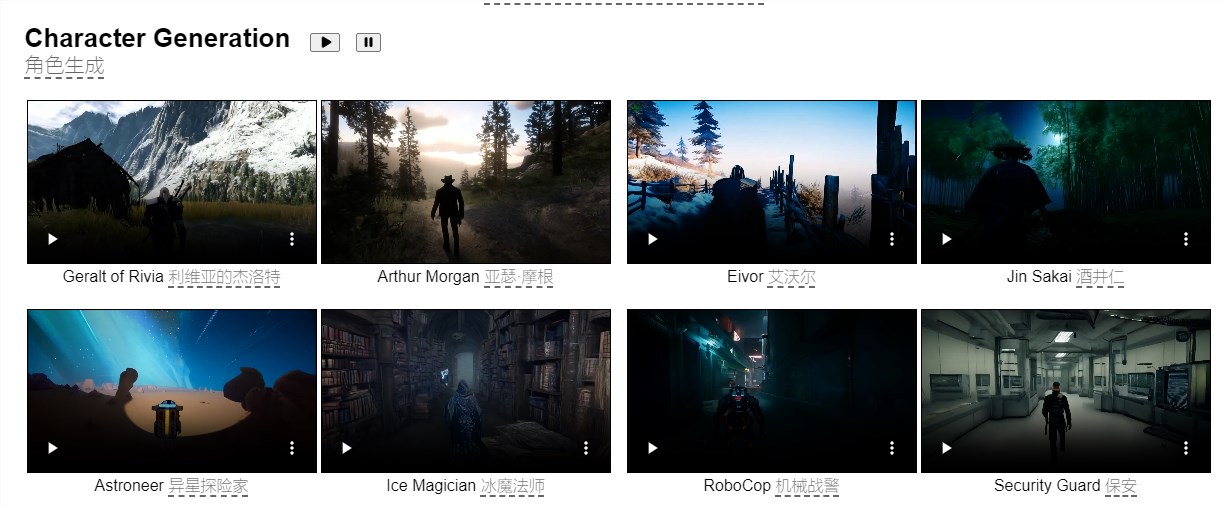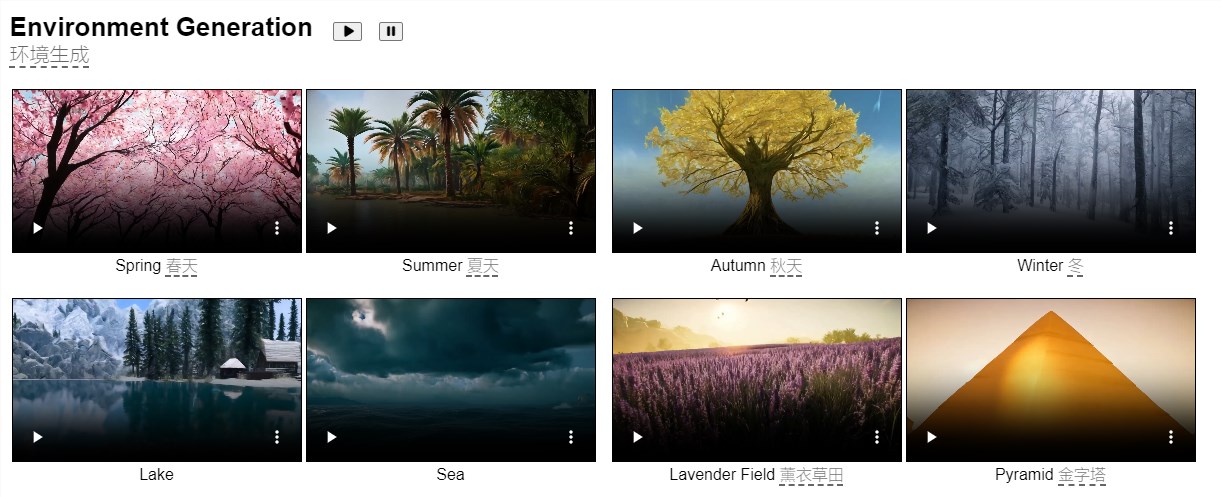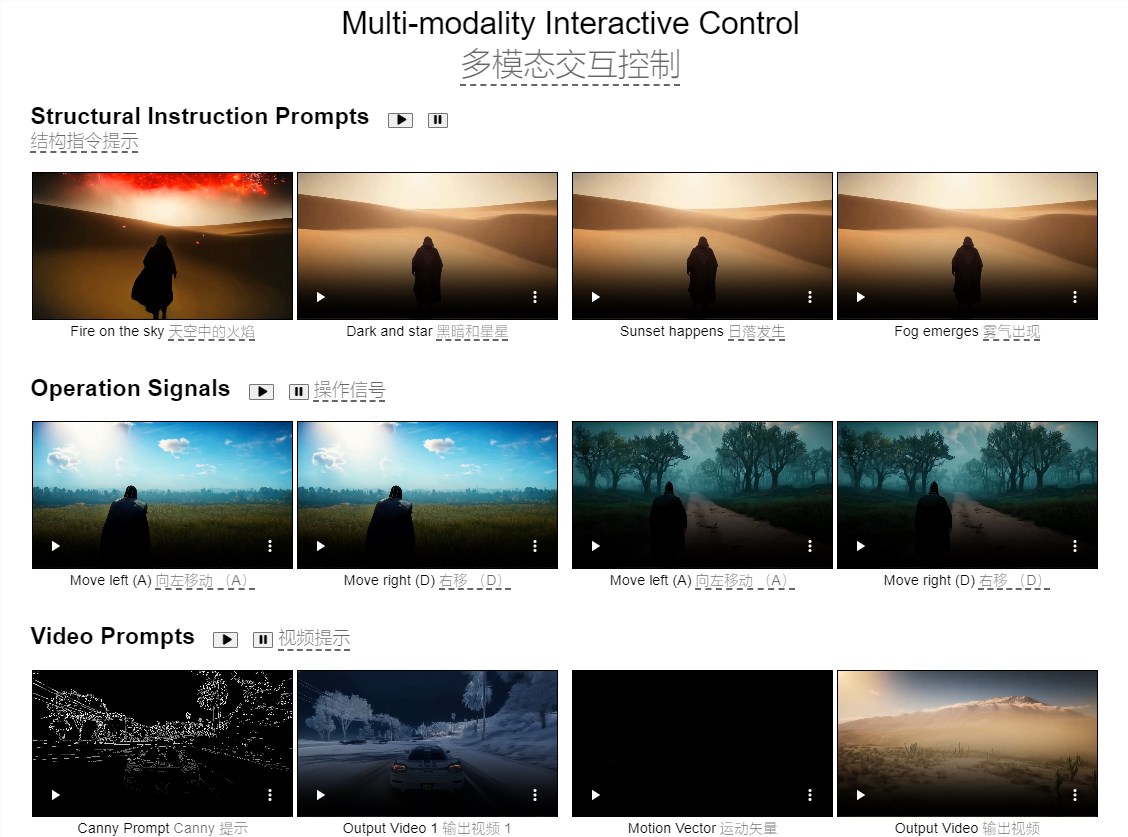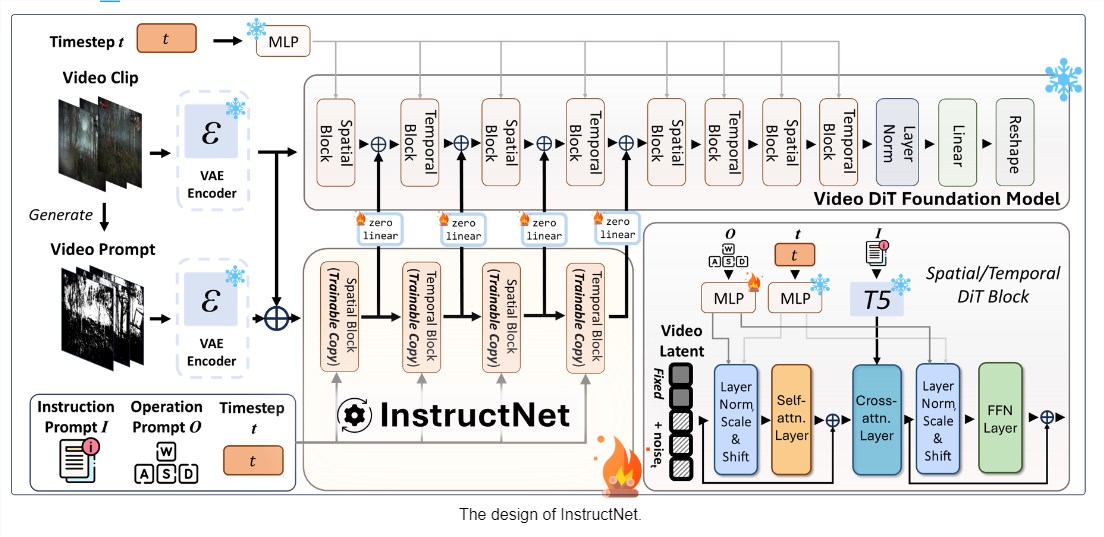A number of universities in Hong Kong and China have collaborated with Tencent to develop an AI model called GameGen-O to simulate the generation of open-world video games. This model can not only generate high-quality game content, but also simulate a variety of game engine characteristics to create rich game elements, such as dynamic environments, complex actions, and various events, and supports multi-modal interactive control to enhance players' gaming experience. . GameGen-O is not a complete playable game, but provides developers with a tool to quickly prototype and test game elements, greatly reducing development time and costs. This article will introduce in detail the development process, functional characteristics and future application prospects of GameGen-O.
Recently, several universities in Hong Kong and China joined forces with Tencent to develop an AI model called GameGen-O specifically designed to create simulations of open-world video games.
The function of GameGen-O is not limited to generating high-quality game content. It also simulates the characteristics of multiple game engines and can create rich and diverse game elements, such as character dynamic environments, complex actions, and various events.

Project entrance: https://gamegen-o.github.io/

This model also provides multi-modal interactive control capabilities, allowing players to freely control during the game, bringing an unprecedented gaming experience.

The research team said that while GameGen-O is not a fully playable game, it provides developers with an excellent tool that allows them to quickly prototype and test different game elements without having to build it from scratch. trouble.
In the demonstration video shown, scenes from many famous games appeared in the scene generated by the model, which may trigger further discussions about copyright.
The development of GameGen-O was a huge project from scratch. The team built an open-world video game data set called OGameData, which contains processing data for more than 100 modern open-world games.
To this end, they collected 32,000 original videos from the Internet, and after professional screening and processing, 15,000 usable videos were finally formed. Videos are cut into segments after scene detection, and then rigorously filtered and sorted to ensure their high quality in terms of aesthetics, optical flow, and semantic content. These snippets are structured and annotated to form a more refined dataset suitable for training.

Next, they trained the model through two stages. In the first stage, the model learned to generate various game content based on OGameData; in the second stage, they added a component called "InstructNet" so that users can interactively control the generated content.
In the actual game generation process, GameGen-O not only supports the generation of characters and environments, but also designs various actions and events, allowing players to experience vivid game scenes. In addition, this model can flexibly adjust the generated content based on player input and instructions, bringing a more personalized gaming experience.
Researchers believe that GameGen-O has taken an important step in using AI to generate open-world video games. It combines creative generation and interactive capabilities and is expected to become an alternative to traditional rendering technology.
They say the model will be a valuable resource for researchers and developers exploring applications as diverse as video game AI development, interactive control, and immersive virtual environments.
In addition, other research teams have recently demonstrated similar AI systems, such as GameNGen jointly developed by Google Research, Google DeepMind and Tel Aviv University. This system can simulate and play the classic game "DOOM" in real time with a frame rate exceeding 20 frames per second.
Highlight:
GameGen-O is a newly developed AI model capable of generating various elements of open world video games.
The mockup is intended to help developers quickly prototype and test game concepts, rather than creating a fully playable game.
By establishing a data set and two-stage training, the research team enhanced the interactive control capabilities of the model, bringing new possibilities to game development.
The emergence of GameGen-O marks the significant progress of AI in the field of game development. Its efficient prototyping capabilities and interactive control functions will greatly promote the development of the game industry. In the future, as technology continues to mature, GameGen-O and similar technologies are expected to completely change the game development process and bring a more colorful game world.